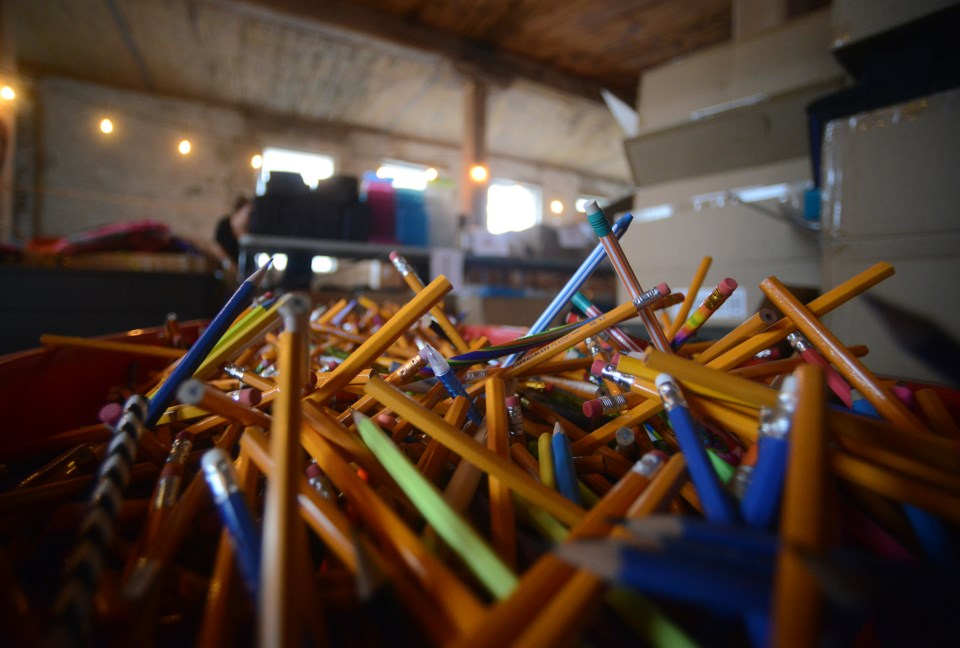“What’s with all the pencils?”
This was a question I put to a slightly more senior scribe one early winter day during my first year on the job as a newspaper reporter.
I was serious. The open box of yellow wooden sticks on his desk was a mystery to me.
Of course, I had seen pencils before. Who hasn't? But I couldn’t remember using pencils on a regular basis since I had been forced to, back in high school math class. I certainly hadn’t used them in journalism school, or to jot notes down from interviews now that I had a real job. Pens were clearly the way to go in my mind.
Maybe this fellow reporter was a perfectionist, constantly erasing his notes and writing them down so they were just right. My handwriting is irredeemably illegible to anyone but me at the best of times, so why in the world would I be worried about needing to fix my mistakes?
Maybe the fact that as a primary school student my handwriting was so atrocious that it took me an extra year to be allowed to use regular sized pencils (as opposed to the fat ones they hand out to the little kids) had something to do with why I wasn’t using pencils.
Maybe this is a column about my resentment toward pencils.
Anyway, “It’s too cold for pens this time of year,” I was told by my colleague.
Huh. We were working in a particularly cold part of the country, after all, so cold weather could be expected to be a factor. But I had arrived in Northern B.C. in the spring and hadn't yet experienced anything truly cold yet.
And, sure enough, that day when I pulled out my pen and pad to write down a note from whatever car accident or outdoor cheque presentation I had been assigned to document, I found that it didn’t work. The ink was frozen.
It was, all of a sudden, quite obvious why pencils might be the wiser choice.
Presumably, people who walk door-to-door with clipboards, or, perhaps those charged with keeping score during outdoor sporting events like interpretive cross-country ski ballet or snow soccer (these are things right?) would be well aware of this.
It was new to me, but it’s a lesson that stuck.
And, before you write in to complain — yes, technically, there are pens specially designed to work in cold weather (and upside down and in outer space, or so I have read), but news reporting is a notoriously no-nonsense and extremely frugal endeavour, so pencils it is.
You might also suggest that in the year 2021 pen and paper is obsolete, but not so in my opinion. Yes, we often use digital recorders to keep an accurate audio version of our interviews, but ideally that’s for cases when we really need the audio, and it other cases it's a backup because the last thing any of us wants to do is to have to relive the entire interview experience when we get back to the office to write a story. So, at the very least, notes are still taken to help remember where in the recording we should skip ahead to find the important bits.
I don’t have reason to conduct outdoor winter interviews very much these days, but you’ll always find a stash of pencils in my desk drawer. And now you know why.
You are quite welcome.
Other cold-weather tips
This made me think of a short list of other journalism-related cold weather-lessons I have learned through the years:
- If you're taking photos on a bright, sunny day and the snow is making your exposures too dark, meter off a blue sky or set the meter on your hand (People will think you're photographing your own hand. Ignore them)
- Keep your phone and extra camera batteries in an inside coat pocket so they will actually last more than 5 minutes
- Keep warm hats, mitts and boots in your car, and maybe even a pair of snow pants. You never know when you’re going to have to climb through a snowbank
- If you’re about to walk into someplace humid like a swimming pool or kitchen, keep your camera in your bag for a while so your lens doesn’t fog up and become useless.
In the days when we had to feed our cameras film, cold weather could be a deal-breaker.
One especially cold spring day in Fort St. John B.C., it turned out to be a deal-breaker in a particular way I hadn’t anticipated. I’ll explain, but first, can you guess what failed?
Dead batteries?
A frosted lens?
Fingers too cold to press the shutter button?
These things have all happened, but not in this case. It turned out that in the short while that I had been standing around waiting for the event to start the film in my camera had frozen so stiff that when I hit the shutter button and it wound up to shoot whatever it is I was covering (maybe it was cross-country skiing?), it ripped the sprocket holes to shreds at 3 frames per second, leaving me with no images and the job of picking wee bits of film from out of the inside of my Pentax Z-1.
The next winter I was shooting digital, so that was my first and last experience like that.
